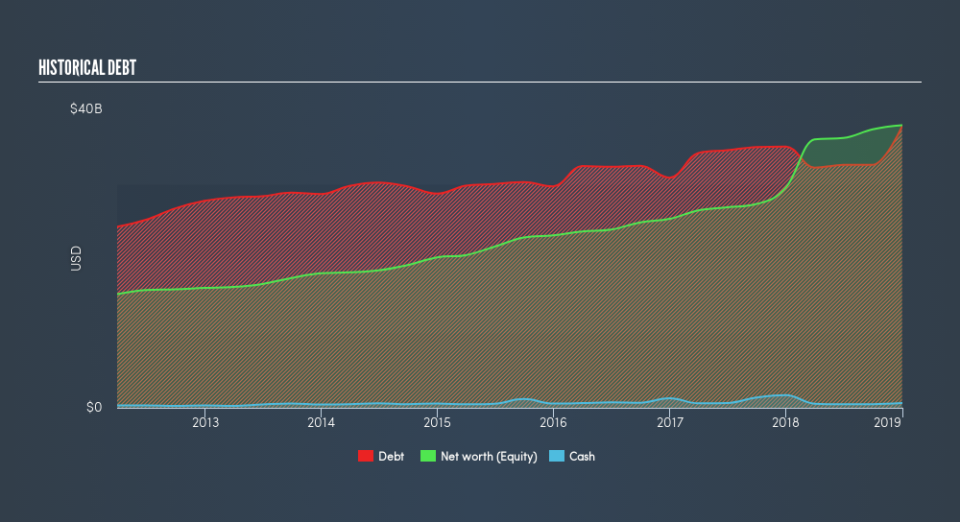What You Must Know About NextEra Energy, Inc.’s (NYSE:NEE) Financial Strength

Want to participate in a research study? Help shape the future of investing tools and earn a $60 gift card!
Investors seeking to preserve capital in a volatile environment might consider large-cap stocks such as NextEra Energy, Inc. (NYSE:NEE) a safer option. Market participants who are conscious of risk tend to search for large firms, attracted by the prospect of varied revenue sources and strong returns on capital. But, the key to their continued success lies in its financial health. I will provide an overview of NextEra Energy’s financial liquidity and leverage to give you an idea of NextEra Energy’s position to take advantage of potential acquisitions or comfortably endure future downturns. Note that this information is centred entirely on financial health and is a high-level overview, so I encourage you to look further into NEE here.
See our latest analysis for NextEra Energy
NEE’s Debt (And Cash Flows)
Over the past year, NEE has ramped up its debt from US$35b to US$38b , which accounts for long term debt. With this increase in debt, the current cash and short-term investment levels stands at US$638m to keep the business going. Moreover, NEE has generated cash from operations of US$6.6b over the same time period, leading to an operating cash to total debt ratio of 17%, indicating that NEE’s operating cash is less than its debt.
Can NEE meet its short-term obligations with the cash in hand?
With current liabilities at US$18b, the company may not be able to easily meet these obligations given the level of current assets of US$6.4b, with a current ratio of 0.36x. The current ratio is calculated by dividing current assets by current liabilities.
Does NEE face the risk of succumbing to its debt-load?
With a debt-to-equity ratio of 100%, NEE can be considered as an above-average leveraged company. This is not unusual for large-caps since debt tends to be less expensive than equity because interest payments are tax deductible. Accordingly, large companies often have lower cost of capital due to easily obtained financing, providing an advantage over smaller companies. No matter how high the company’s debt, if it can easily cover the interest payments, it’s considered to be efficient with its use of excess leverage. Preferably, earnings before interest and tax (EBIT) should be at least three times as large as net interest. For NEE, the ratio of 3.05x suggests that interest is appropriately covered. Large-cap investments like NEE are often believed to be a safe investment due to their ability to pump out ample earnings multiple times its interest payments.
Next Steps:
With a high level of debt on its balance sheet, NEE could still be in a financially strong position if its cash flow also stacked up. However, this isn’t the case, and there’s room for NEE to increase its operational efficiency. In addition to this, its lack of liquidity raises questions over current asset management practices for the large-cap. This is only a rough assessment of financial health, and I’m sure NEE has company-specific issues impacting its capital structure decisions. I recommend you continue to research NextEra Energy to get a better picture of the stock by looking at:
Future Outlook: What are well-informed industry analysts predicting for NEE’s future growth? Take a look at our free research report of analyst consensus for NEE’s outlook.
Valuation: What is NEE worth today? Is the stock undervalued, even when its growth outlook is factored into its intrinsic value? The intrinsic value infographic in our free research report helps visualize whether NEE is currently mispriced by the market.
Other High-Performing Stocks: Are there other stocks that provide better prospects with proven track records? Explore our free list of these great stocks here.
We aim to bring you long-term focused research analysis driven by fundamental data. Note that our analysis may not factor in the latest price-sensitive company announcements or qualitative material.
If you spot an error that warrants correction, please contact the editor at editorial-team@simplywallst.com. This article by Simply Wall St is general in nature. It does not constitute a recommendation to buy or sell any stock, and does not take account of your objectives, or your financial situation. Simply Wall St has no position in the stocks mentioned. Thank you for reading.

